|
Viticulture and winemaking at Candialle, Chianti Classico
Jarkko Peränen
discusses his work at this impressive Tuscan wine estate
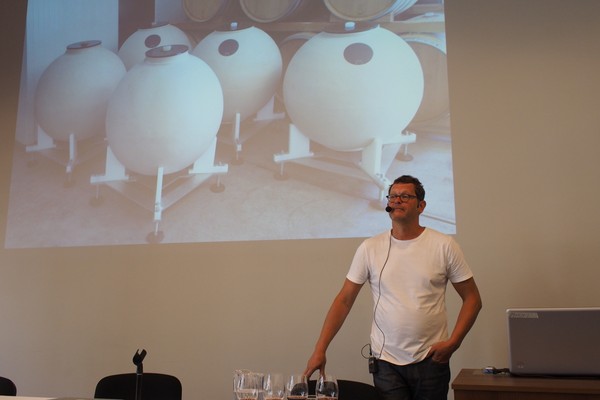
At the
wine symposium in Tampere, Finland that I recently attended, there
was a seminar by Jarkko Peränen.
He's Finnish, but now lives in Tuscany, where he makes the Candialle
wines. He initially went to Italy just to do harvest, but stayed on
to work with a small producer in Chianti Classico for 5 years,
during which time this tiny domaine grew from 1 to 3.5 hectares.
Then in 2002 he bought a farm in Panzano, in the middle of the
region. He's been making wine there ever since, working in quite a
natural way and managing the vineyards very sympathetically,
focusing on soil health.
The
vineyards of Candialle mostly face southwest, and are almost all
Sangiovese, but with bits of Merlot, Cabernet Franc and Petit Verdot,
plus a little Malvasia Nero and Canalaio. Soils are mostly palaestra,
which the typical soil of the region, consisting of clay and schist.
It almost looks like just clay on the surface, but underneath there
are layers of schist. There are also some big blocks of albarese, a
hard limestone.
Most
of the vineyards in Tuscany are cane-pruned with the cane laid down
in an arc, which is a way of sorting out the uneven growth of
shoots, and planting density is commonly 5000 plants/hectare. But
half of the vineyard at Candialle is head pruned as a bush vine
(known as albarello), but Jarkko's isn't the classical type –
Sangiovese doesn't have an upright growth, so the three arms of the
vine are in a line, called candelabra, so it can be trellised. Each
vine is pruned to three spurs of two buds each.
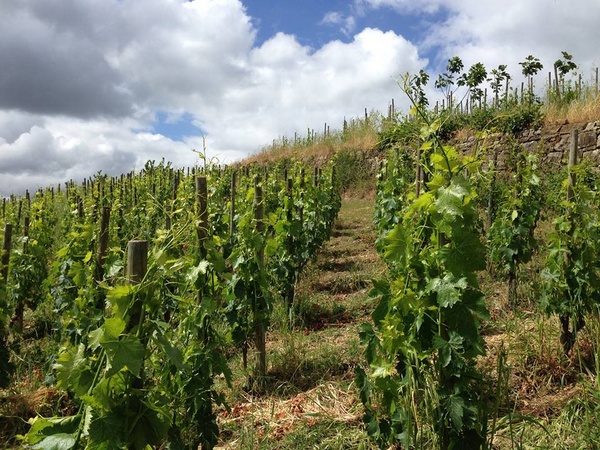
Picture courtesy Jarkko Peränen
There's a small part of the vineyard, just one hectare, that is
planted at extremely high density, with 10 000 plants/ha, trained on
poles. Everything is done by hand here because the tight spacing
won't allow machinery in.
In the
poorer soils on the estate, Jarkko uses clover as a cover crop.
Where the soil is richer, he uses barley or oats, and these plants
protect the soil against erosion. In contrast to the local weed
grasses, the barley doesn't compete for water with the vines,
because it stops growing much earlier than the local weeds. When the
grass growth is strong, he'll use a mechanical means of clearing
under the row. And when the inter-row barley or wheat is cut, it
forms a mulch on the soil, and this is really useful in a warm
climate such as Tuscany because it stops the soil from heating up
too much.
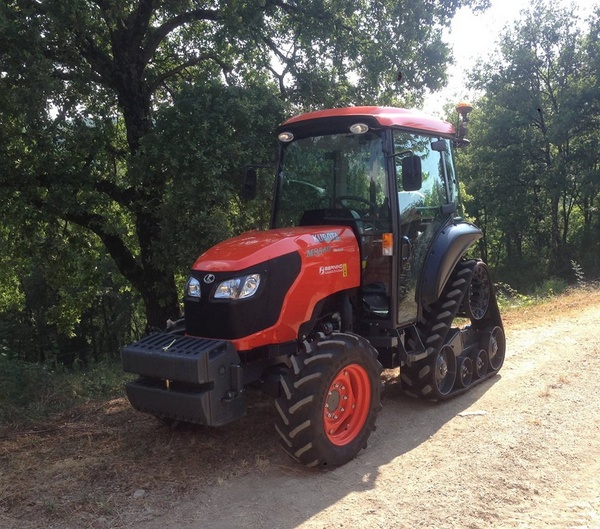
Picture courtesy Jarkko Peränen
Jarkko
is making an effort to pass through the vineyard as little as
possible with the tractor, because he's anxious to avoid compacting
the soil. In particular, if it has rained, then the soils is
especially at risk of being compacted. With this in mind he's just
bought a new machine for clearing weed growth in the row: it does it
in one pass, whereas the older machine took two passes. He's also
bought a new tractor: instead of having conventional rear wheels, it
has a rubber track, which reduces the weight on the soil by 70%.
He
tries to avoid topping the vines. If the vineyard is in balance then
the shoots will stop growing at just the right point, and if they
grow a little bit too much the way the excess growth flops over
helps to shade the grapes a bit.
At
Candialle there is a very limited green harvest: they just take out
any bunches that are really far behind at the end of veraison. In
2014 it rained a lot and so they did a lot of leaf removal. In
normal seasons they don't need to because the bottom leaves start to
die before harvest in a sort of natural fruit zone leaf removal. The
reason for leaf removal is just to allow more air around the
bunches, reducing the disease risk.
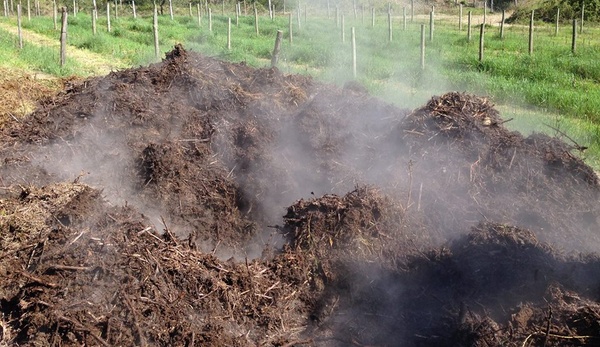
Picture courtesy Jarkko Peränen
The
prunings are taken and deposited in piles in every second row where
there is no cover crop. They are used for compositing. The
alternative is burning, or you can shred them and put them back in
the vineyard without compost, but that's risky for diseases. They
don't use any other fertilizers: just their own compost, with the
exception of seaweed and beetroot extract that is sometimes used as
a leaf treatment, when it's needed. The vineyard divided in three
and every third year the vines get compost. As well as prunings, all
the lees and grape skins end up in the compost. The prunings are
hard to compost, so Candialle have two cows which provide the
starter for the compost.
As the
compost develops, it needs mixing every month, and it gets very hot
inside when it is fermenting. In a bit more than a year even the
pruning wood becomes soil. The amount of earthworms inside the
compost during the last phase is amazing, says Jarkko: there must be
200 earthworms in a kilo of compost. And he finds lots of earthworms
in the soil of the vineyard. In particular, the close-planted upper
vineyard that has never been worked by a tractor it is full of
worms.
Everything in the vineyard is done organically. Jarkko says that the
only thing he can use against fungal diseases is copper and sulfur,
and the spray is 150 g/hl of copper and 2 kg/hl of sulfur.
He
also use some other organic sprays. Biopesticides are now more
common the market, he says, and he's now trying Trichoderma (a
fungus, sprayed at 1.5 kg/ha), which colonizes the pruning wounds so
that trunk diseases can't come in. He's also trialling new
biological solutions against bunch rot and mildew. He uses sexual
confusion against the grapevine moth, which lays eggs on the grapes,
which then hatch into larvae and eat into the grapes. They make a
hole in the grape, some juice comes out and you get grey rot.
It's
also possible to use Bacillus thuriengensis (a bacterium) against
this moth, too. Bacillus kills the larvae when they hatch.
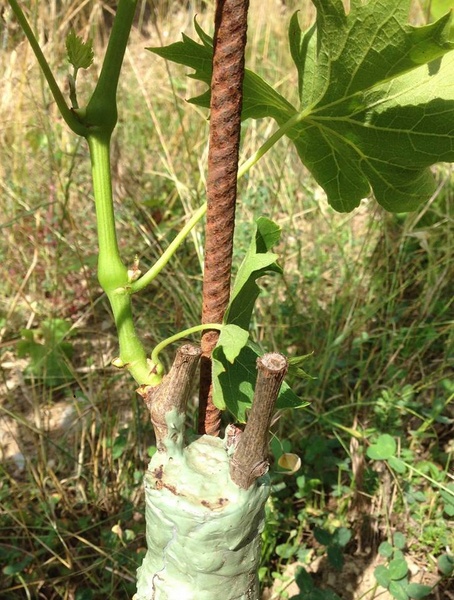
Picture courtesy Jarkko Peränen
Jarkko
has 10 Sangiovese vines over 100 years old. So he's started a
program of grafting cuttings of these onto Merlot, with a view to
getting enough cuttings that can get them grafted by a nursery. He's
also trying to do the same with an old Canalaio vine that is growing
up a tree. For a long time the clones planted in Chianti were
over-productive and gave poor wine quality. For that reason, if he
were offered a vineyard with 40 year old vines and one with four
year old vines, he'd take the latter because it would be planted
with better material.
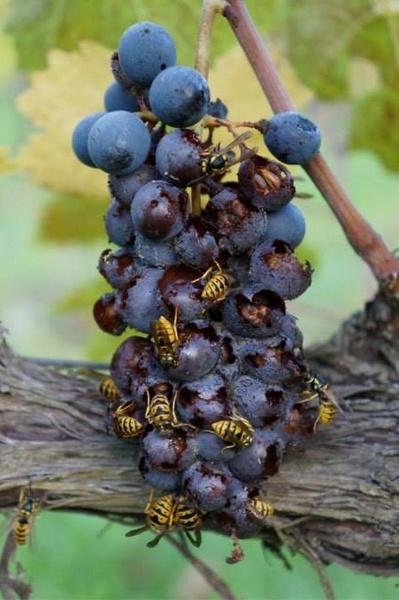
Picture courtesy Jarkko Peränen
He
also discussed some interesting research looking at yeasts in the
vineyard. Recent Italian research found that the stomachs of wasps
and hornets are full of yeast. They eat ripe grapes, wome of which
have already started fermenting on the vine because of damage. The
yeasts overwinter in their stomachs. Then the insects spread these
yeasts back onto the vineyard in the spring. A surprisingly large
number of strains of Saccharomyces cerevisiae were found in the wasp
stomachs: as many as 300. Many were wild strains but some were
commercial isolates.
After
harvest, the grapes go into an old sea container to cool them down
overnight. They then go into tank at around 8 C, which gives a
natural cold soak. The destemmer is on the roof of the winery and
grapes go into tanks by gravity. Jarkko has experimented with 25%
stems, but it doesn't make that much difference, and because the
fermentation tanks are very small there are no issues of aeration,
which is one of the reasons stems are used. The biggest tanks are
3300 litres so don't need stems for mechanical reasons.
Most
grapes go into 2600 litre open top fermenters (he has 12). But part
of fermentation takes place in concrete, in one of four 3300 litre
cement tanks. These have open tops big enough for punchdowns, but
they can also be sealed properly for ageing. These are unlined. He
uses delestage at beginning of fermentation (rack and return): it's
a good method for getting must uniform and it cools fermentation
down a bit too.
The
wine can stay up to 70 days on the skins, with the shortest
maceration being 30 days. Candialle has a small basket press, with
2700 kg capacity. It gives very good quality first press juice.
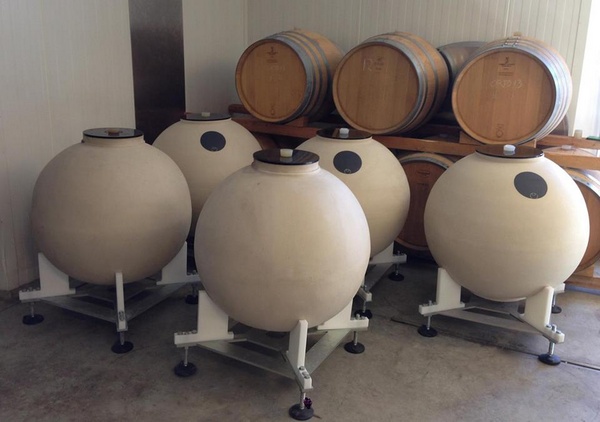
Picture courtesy Jarkko Peränen
There
are three ways that Jarkko ages the wines. Two-thirds goes to
barrel, with about 5% new oak in the cellar. Then there are the
concrete tanks. And finally, a totally new container, which is
called Clayver. It is a 250 litre ceramic ball made by a Genoa-based
engineer, who is a wine freak. These balls are fired at almost twice
the temperature of terracotta, and they are completely neutral
(small amphorae release some taste to the wine). They are sealed
with a heavy glass lid.
These
balls allow one-tenth the oxygen transmission that barrels do, and
Jarkko has 10% of the world's production in his cellar (he has
five). The great thing is that they are priced at just 700 Euros
each, although the stands used to support them cost a further 250
Euros. The Mimas 2013 that we tried is the first commercially
available wine in the world from these Clayvers.
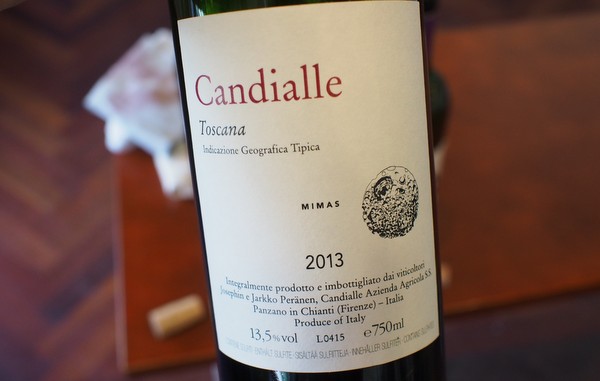
THE
WINES
Candialle Mimas 2013 IGT Toscana, Italy
13.5%
alcohol. Smooth, precise, nice warm spiciness, and lovely cherry and
plum notes. 35 days on skins, pressed, aged in the balls. Lovely
precision here. Subtle fine herby notes. Very pure, with good acid
and structure as well as a savoury spiciness. Lovely freshness and
purity. 93/100
Candialle Ma Misse 2013 Chianti Classico, Italy
13.5% alcohol. This Malvasia Nera and Canaiolo, and 92% Sangiovese.
Most of this (90%) aged in concrete tanks, and also 6-7 year old
barrels. This has some ripe, warm, spicy berry fruits with savoury
damson and plum fruit. Very subtle spicy balsamic notes, but has
nice flesh and purity, with good acidity. Really appealing with nice
texture. 92/100
Candialle 2011 Chianti Classico, Italy
14%
alcohol. Warm vintage. No new oak, with 2nd and 3rd
year barrels, plus some older ones. Warm and rich with hints of
vanilla and sweet berries. Very rich, warm and quite ripe with a
lively spiciness. Very rich and forward, with lots of sweet spicy
fruit. Almost Rioja like. 90/100
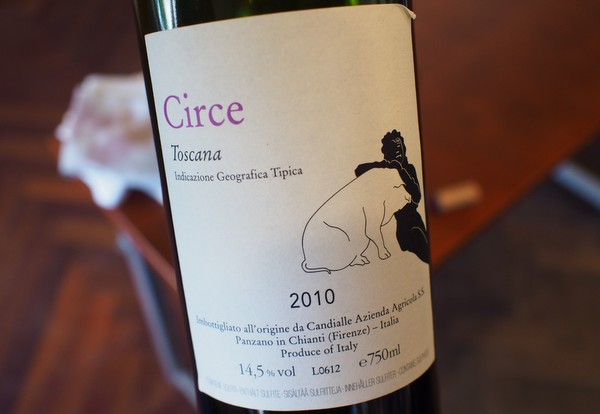
Candialle Circe 2010 IGT Toscana, Italy
14.5%
alcohol. This is a blend of Petit Verdot, Cabernet Franc, Merlot.
It's just so different to the Sangiovese. Has a fresh, slightly
minty edge to the dense, vibrant, intense fruit. Blackcurrant,
blackberry, lovely intensity here. Quite structured and vivid with
strong mint and firm tannins. So distinctive and rich, but doesn't
lack freshness, with keen acidity. 92/100
See
also:
 Visiting
Chianti Classico (series) Visiting
Chianti Classico (series)
Wines
tasted 08/15
Find these wines with wine-searcher.com
Back
to top
|

